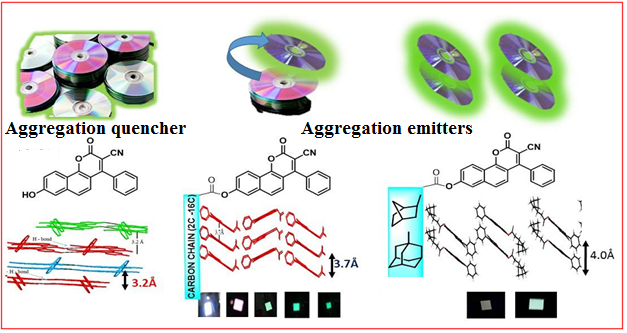ORGANIC OPTICAL MATERIALS AS PROMISING NUCLEAR STAINS FOR LIVE CELL IMAGING:
Nucleic acids are the fundamental of cellular development, functioning and inheritance of genetic information’s in living beings. The structural elucidation and determination of structure-function relationships between DNA and RNA, is the emerging area of curiosity for advanced biochemical research. The broad insights in this field outline the principles of molecular pathology which provides the novel approaches for diagnosis and prognostic assessments of human diseases. The research topics include design and development of new organic optical material as biocompatible, bright and photostable nuclear stains, the worth evaluation of the developed optical materials in the field of fluorescent imaging of nucleic acids and real time analysis in live cells.

ORGANIC SENSORS:
Alteration of level of a biologically relevant species is generally associated with the diseased state. Selective and quantitative imaging of such species is helpful in early detection of the disease. My research is aimed towards the design and development of fluorescent probes for sensing as well as real-time imaging of these species. Our approach is to use theoretical calculations to predicting fluorescence properties before and after sensing. Present designs are focused towards the development of probes for the selective detection of cations, hydrogen sulphide (H2S), Nitric Oxide (NO) and Carbon Monoxide (CO) etc.

STUDY OF SMALL MOLECULE PROTEIN INTERACTIONS:
Molecular materials based on organic chemistry are synthesized and the details interaction between those molecular materials and proteins are investigated through the study of optical property measurement. Thus molecular materials can be used to quantify selective proteins in bio-fluids to distinguish human diseases in their early stages.

ORGANIC MATERIALS FOR LIGHT EMITTING APPLICATIONS:
Organic Materials for light emitting applications (LED): Planar luminophores assumed to be non emissive in solid state and thus led to their exclusion of planar molecules from the field of solid state applications. Since the light emission application area demands highly energy efficient emissive organic luminophores, development of same is highly desired. Moreover, in the present scientific world, not only the development of efficient materials is necessary but simultaneously, there is a great need to develop literature to understand and solve problems. Herein we are working to develop simple ways to turn aggregation quencher to aggregation emitter possible via synthetic organic tools along with development of molecular level understanding of the phenomenon is also an important part of research.
